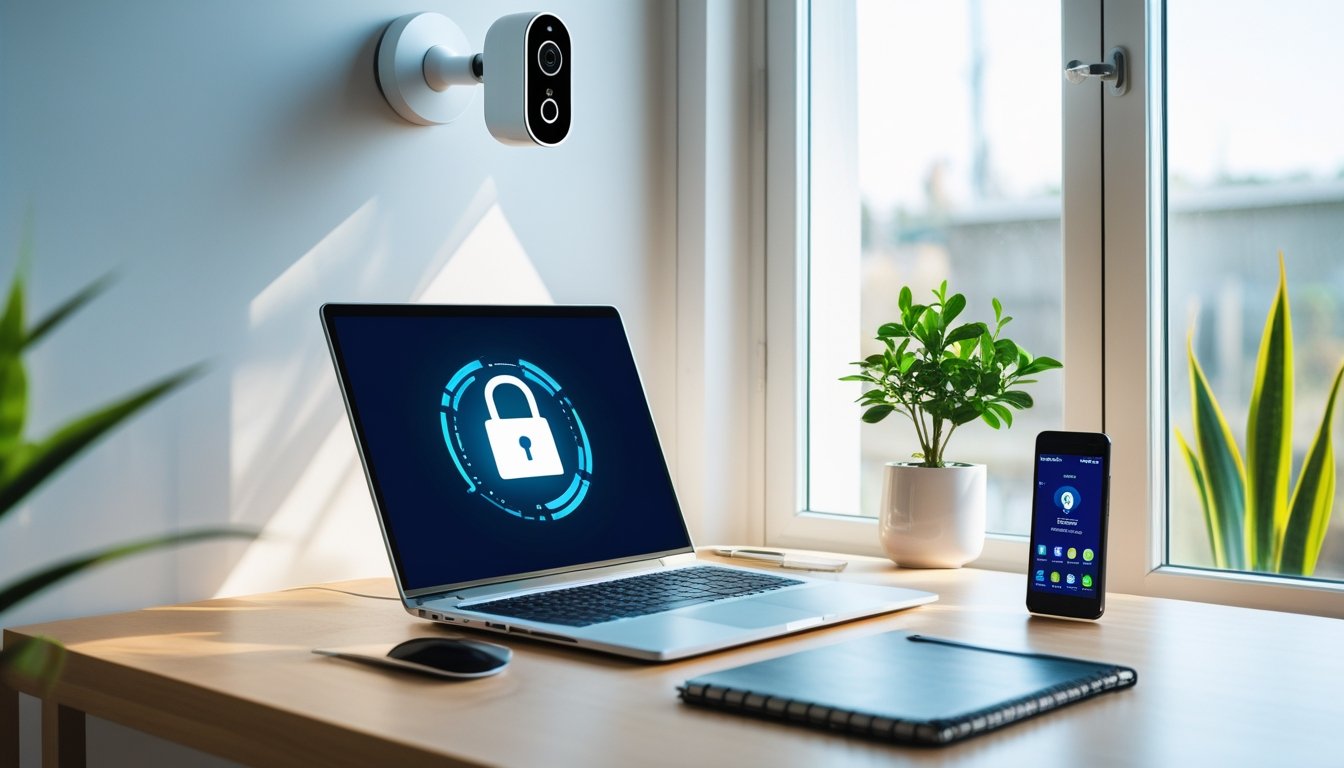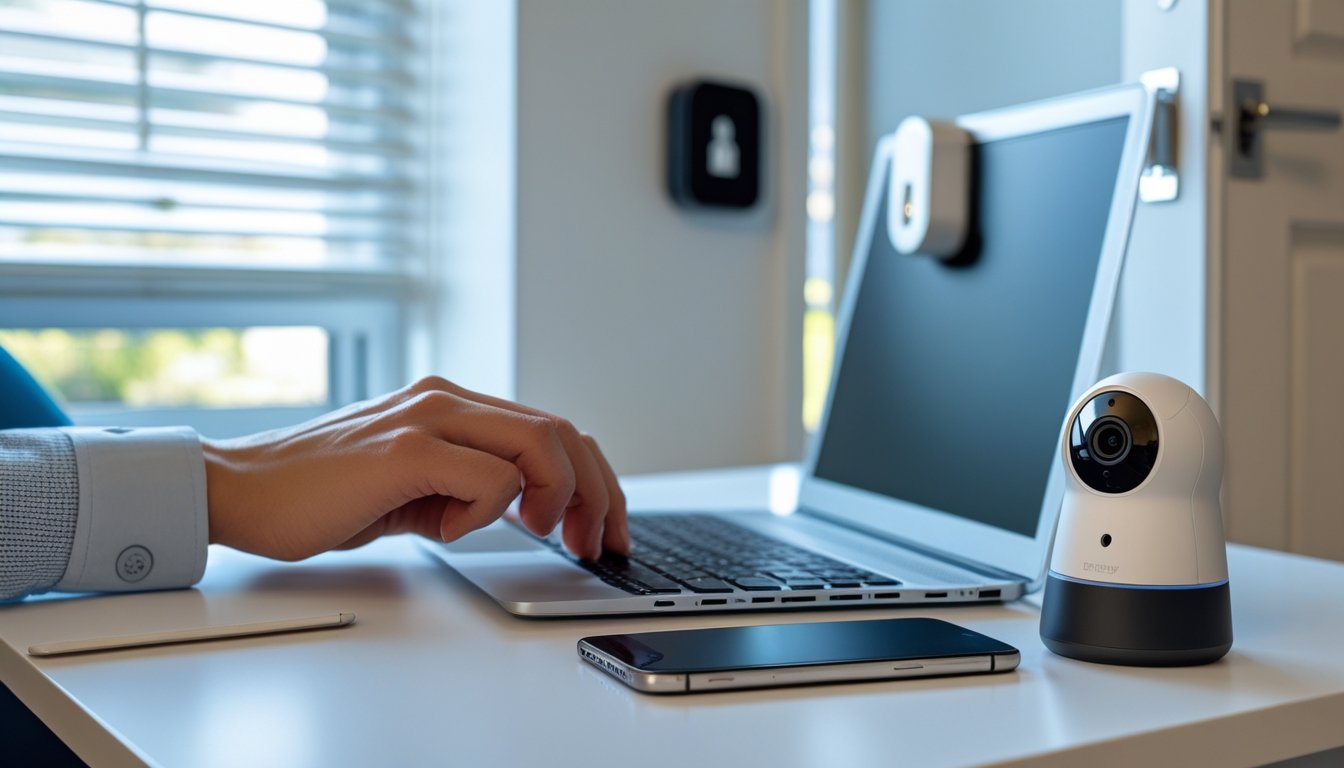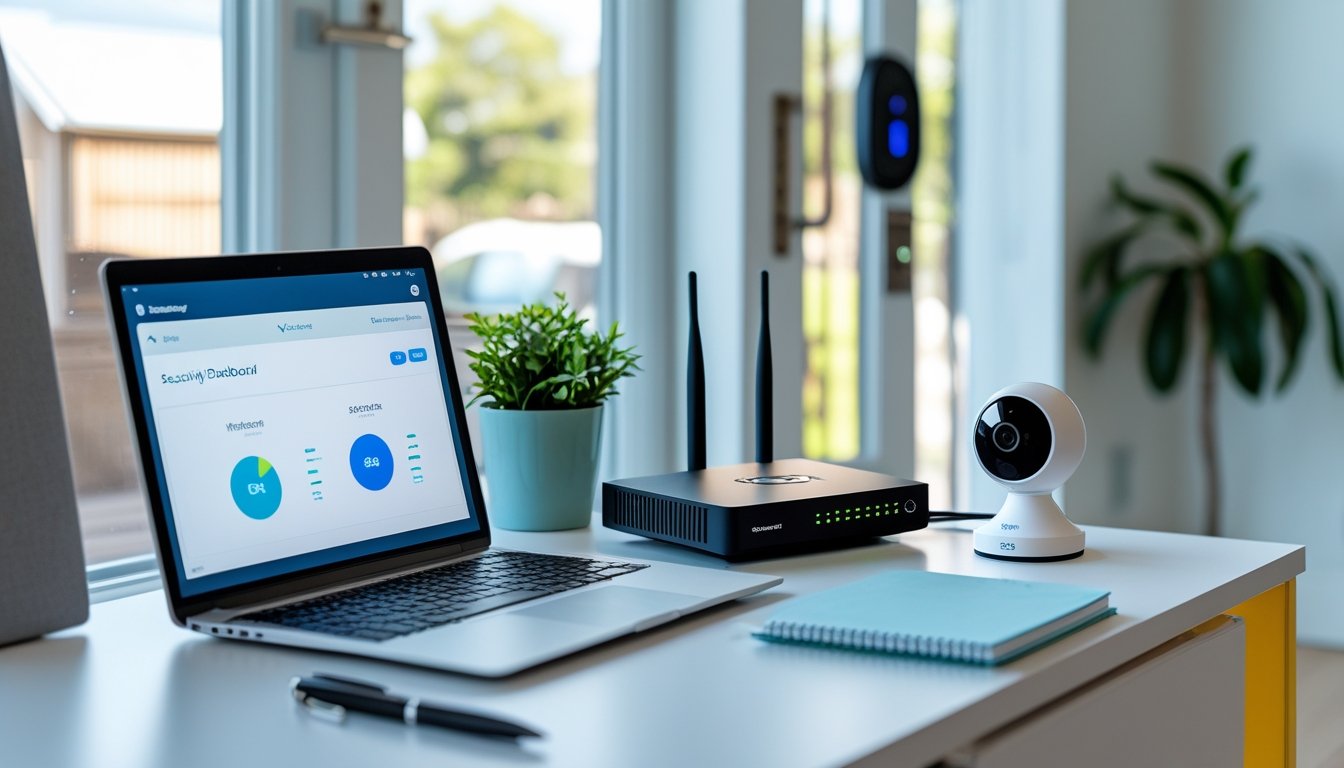Late updated: 26 Nov 2025 10:11
Written by: Elena Prescott
Securing Your Home Office With Simple Solutions: Practical Tips for Safety
Securing our home office is no longer just a technical necessity but a fundamental requirement of modern work life. With more of us working from home, it's crucial to consider both digital and physical security measures. Combining basic security steps with technology can significantly reduce risks and protect valuable data and equipment.

Simple solutions can make a world of difference. By using reliable locks, smart security cameras, and efficient access control systems, we can turn our home workspaces into safe havens for both personal and professional assets. These measures not only safeguard our resources but also enhance our peace of mind.
Addressing common security concerns with straightforward methods keeps our work environment secure. Practical measures like establishing boundaries between our personal and professional devices and considering cybersecurity basics are effective strategies. Elevating our security practices ensures we're well-prepared to handle any challenges that come our way.
Key Takeaways
- Simple steps can enhance home office security effectively.
- Integrating technology provides additional protection.
- Address both digital and physical security needs.
Fundamental Solutions for Securing Your Home Office
Securing a home office effectively protects both personal and professional assets. We'll explore identifying security risks, implementing physical safeguards, and bolstering cybersecurity measures for your remote work environment.
Assessing Home Office Security Risks
In our journey towards securing our home office, knowing the vulnerabilities is the first step. We should start by evaluating our home office setup, looking at how easy it is for unauthorized access, both physically and digitally. Taking note of potential access points such as doors, windows, and internet connections, allows us to develop a strategy to address these issues.
Once we've identified the physical entry points, it’s essential to consider the cybersecurity vulnerabilities that might affect our home office. Reviewing our current digital setup, identifying out-of-date software, and weak passwords will help in mitigating potential cyber threats. By fully understanding these risks, we can devise comprehensive security protocols to safeguard our workspace.
Essential Physical Security Measures
Physical security forms the cornerstone of a secure home office. Robust locks on doors and windows serve as the first line of defence against intrusions. Installing security cameras and motion sensors adds an extra layer of protection, allowing us to monitor any unusual activity.
An organised home office layout can further deter potential threats. Placing valuable equipment away from windows and securing data storage devices equips us to manage risks better. Investing in a sturdy safe for sensitive documents and expensive gadgets is an additional precaution. Implementing these straightforward measures ensures our home office becomes a safe haven for our work activities.
Basic Cybersecurity Practices
Cybersecurity is a critical part of maintaining a secure home office environment. It begins with setting up a reliable firewall to protect our network. Firewalls serve as barriers against unauthorised access and help maintain the integrity of our internet connection.
Moreover, keeping software up-to-date is paramount; regular updates patch security vulnerabilities that hackers exploit. Using strong, unique passwords for our devices and accounts is vital, and employing a password manager can assist in maintaining this practice. Incorporating two-factor authentication adds a further layer of security, making it harder for unauthorised individuals to breach our accounts. By adhering to these basic but effective cybersecurity practices, we fortify our home office against a range of security threats.
Simple and Effective Security Solutions

To ensure your home office is secure, it is vital to employ practical measures that are both straightforward and highly efficient. This section explores how integrating smart technology and robust data protection strategies can safeguard your workspace.
Implementing Smart Lock and Camera Systems
Smart locks and camera systems offer cutting-edge security by allowing remote monitoring and control, enhancing the safety of any home office. These systems can be integrated with a mobile app, providing real-time notifications of any suspicious activity. Smart locks eliminate the need for physical keys, reducing the risk of lost or stolen keys leading to unauthorised access. Burglars are deterred when they see visible security cameras, which serve as both surveillance and a preventive measure.
Incorporating alarm systems that trigger during a forced entry can further bolster security. These systems often include motion sensors and can be linked to local authorities for immediate response. By investing in reliable security systems, we ensure our home offices remain protected against external threats.
Establishing Strong Authentication and Password Management
Securing digital information begins with robust authentication processes. Adopting two-factor authentication (2FA) adds a necessary layer of security, ensuring that even if passwords are compromised, unauthorised access is prevented. We should also use a reputable password manager to generate and store complex passwords securely. This practice reduces the risk of weak or reused passwords that can lead to breaches.
Regularly updating passwords and using unique passwords for different accounts are essential habits. Implementing a security audit of our authentication methods can highlight vulnerabilities and improve our overall cybersecurity posture. Staying vigilant about authentication practices helps protect sensitive data from cyber threats.
Protecting Data with Encryption and Secure Storage
Data encryption is crucial in safeguarding our digital assets. By employing encryption tools, sensitive information is transformed into unreadable formats without the correct decryption key. This means even if data is intercepted, it remains unusable without proper access credentials. Implementing software updates regularly is critical to patch vulnerabilities that could otherwise be exploited.
Secure storage solutions like encrypted drives or cloud services with end-to-end encryption ensure data remains protected. Additionally, setting up a reliable backup system can mitigate data loss during hardware failures. Enforcing these practices supports a comprehensive data security strategy, shielding information from potential compromises.
Planning Emergency Response and Insurance Coverage
Preparing for unforeseen events is a key element of a security strategy. Establishing a detailed emergency response plan ensures we can act swiftly and efficiently in crises. This plan should outline steps for contacting emergency services and protecting crucial assets. Creating a detailed inventory of equipment and documents aids in recovery should theft or damage occur.
Insurance coverage tailored to office equipment is another layer of protection, providing financial support if expensive devices or data storage systems are harmed. Including a mobile hotspot in our emergency kit guarantees connectivity for critical communications if the main internet connection is disrupted. By planning thoroughly, we increase our resilience to various security threats.
Frequently Asked Questions

In ensuring home office security, there are several steps and strategies that address both physical and digital safety. These involve protecting confidential information, securing wireless networks, managing passwords effectively, and implementing physical security measures.
What are the essential steps for enhancing home office security?
We should begin by updating all software and installing reliable antivirus protection. Regular software updates patch vulnerabilities that might be exploited by malicious entities. It's also crucial to have firewalls activated and running to shield our systems from unauthorised access.
How does one effectively protect confidential information when working remotely?
Utilising encryption tools is vital for safeguarding sensitive data. We recommend using secure connections like VPNs for remote access. Ensuring that all communications and file transfers are conducted over encrypted pathways can help maintain confidentiality.
What measures should be taken to secure a wireless network in a home environment?
Securing our wireless network starts with changing default passwords on routers and setting up a strong, unique password. Enabling WPA3 encryption provides a higher level of security. We should also consider configuring a guest network to isolate our professional activities from personal devices.
What are best practices for creating and managing strong, secure passwords?
Creating complex passwords and using a password manager are effective strategies. Our passwords should include a mix of letters, numbers, and symbols. Regularly updating passwords and employing two-factor authentication adds an extra layer of security.
How can physical security be ensured in a home office setup?
Locking doors and windows in our home office area is a basic yet essential measure. We can enhance security by installing alarm systems and surveillance cameras. Additionally, storing valuable equipment like laptops in locked cabinets when not in use is advisable.
What strategies can be employed to prevent unauthorised access to home office equipment and data?
Implementing access controls, such as biometric authentication or smart locks, can help us protect our equipment. Encrypting sensitive files and using robust security software will deter unauthorised entry and data breaches. Being vigilant and proactive in monitoring unusual activity is also a key preventative measure.
